Latin Gregorian chants woke us early and we set off with some enthusiasm in the dark. We nearly lost the trail before we started, but found it by venturing a little further – I need to trust to more distance between markers.
Heading uphill (is there any other way in Spain?) we climbed over Alto de San Anton with great views over some classic mesa and butte geological formations (flat-topped hills) similar to the ones we have in Australia.
At around 5.5kms we encountered a cone-shaped stone hut – it appeared to be of recent construction, but it turns out it is a replica stone hut associated with the legend of Roland.
Roland was in Charlemagne’s army and legend has it that he confronted and killed a giant named Farragut – a Saracen warrior said to be 9 feet tall and supposedly a direct descendant of the biblical Goliath. I wonder how many people in the Washington DC suburb of Farragut know it was named for a Saracen terrorist…
We descended steadily to a rest area with a wall covered in Camino-themed poems. Very different from graffiti we’ve seen elsewhere. We found a bench beside the vineyards to have some breakfast.
Then on to Nàjera. We entered the town passing dilapidated blocks of flats. We decided to skip coffee and head into the centre of town as the outskirts did not look too inviting. We found a bar serving coffee and we decided to move on. But we almost missed an extraordinary place.
A surprise awaits…
We were crossing a square, when I checked out the surrounding architecture. ‘Looks quite old’ I remarked. Then I saw an information board. As anyone will tell you, I read any text that catches my eye, so of course I headed straight over. It turned out to be the Monastery of Santa Maria de la Real. We went in.
There was a knight’s cloister, which houses the tombs of Riojan, Navarrese and Basque noble families of the 16th-18th Centuries. The cloister was built between 1517-18. In 1888 it was declared a National Monument, and six years later, in 1895 it was occupied by Franciscan monks who live there to this day.
The church was built around 1422, and it holds a secret. I entered the church and was struck by the ornate gilded altarpiece, and then I turned around.
According to legend, described on the information board:
“In 1044 King Garcia Sanchez III was out hunting and saw a partridge. He sent his falcon after it and the two birds flew into a cave. He followed and deep inside he saw a vision of the Virgin Mary with a bell on one side, a lamp on the other and in the centre, a vase of white lilies.
After the king captured Calahorra he decided to found a hostel for pilgrims and a monastery in honour of the Virgin. The image which is venerated today dates from the 13th Century and comes from the Royal palace of Nàjera and is known as the Virgin of the Rose.”
The cave lies at the back of the church and is accessed through a Romanesque arch guarded by two sentinel statues. And a short way in you will find an altar with the statue of the Virgin. It is truly remarkable. And there’s more. The altar has reredos made around 1690 by Francisco de la Cueva and Mateo de Rubalcaba – they are covered in gold leaf. The altar contains the three objects found by the king in the cave with the virgin.
I was pleased I had the big camera, as there is no way the phone camera could capture this in the low light!
It seems plausible that the cave was hewn in the red sandstone around the 3rd century AD and was forgotten and overgrown until the incident with the partridge and the falcon.
As you leave the cloister you enter the garden through the gate of the Tree of Life gate with the subject picked out in stone tracery like a delicate lace woven in stone.
In a side altar there was also a beautiful statue of St James depicted as a pilgrim with the shell and gourd.
The church itself is like a fortress on the outside – a mark of the violent times in which it was built, and a reminder of the dangers faced by pilgrims in the past.
From here we headed on to Azofra, which we could see in the distance with stark hills behind.
We arrived around 2.00pm. Fortunately we had an excellent room and we are the only people in the Pension. Then out to a restaurant for a pilgrim menu €10 each including a bottle of wine!
We met a Canadian with a kilt, and an American – Kathy – whom we saw back at St Jean Pied de Port. She is with us again and we had a great discussion over dinner.
And so to bed. Tomorrow we head to Santo Domingo de la Calzada.
________________________________________
INDEX – If you wish to follow our journey from the beginning, or jump in to any of the Camino posts,
here is a link to the index page – which can also be found in the navigation bar at the top of this blog
________________________________________
You can have these posts delivered to your in-box by entering your email address and clicking the ‘subscribe button to your left, then respond to the confirmation email in your in-box 🙂


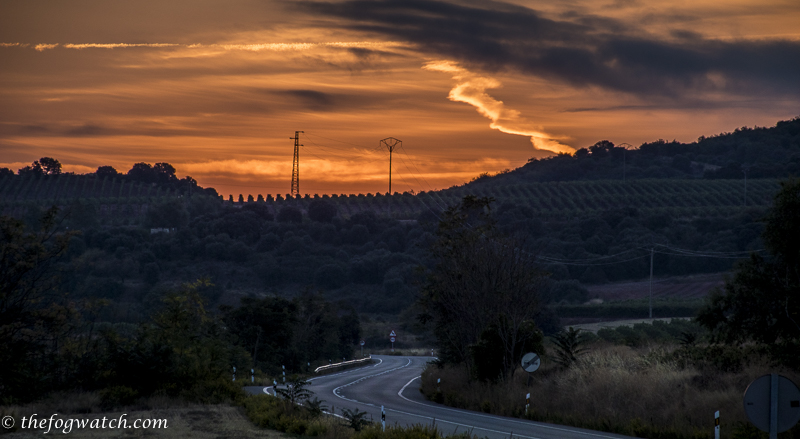
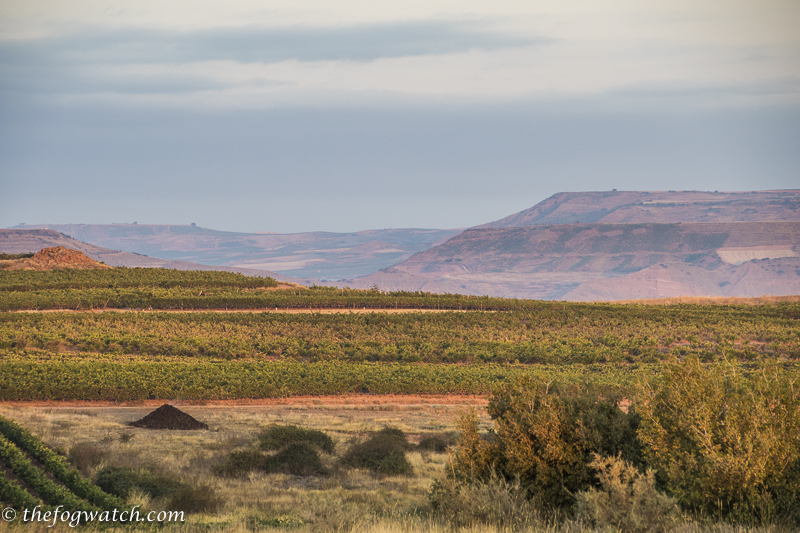
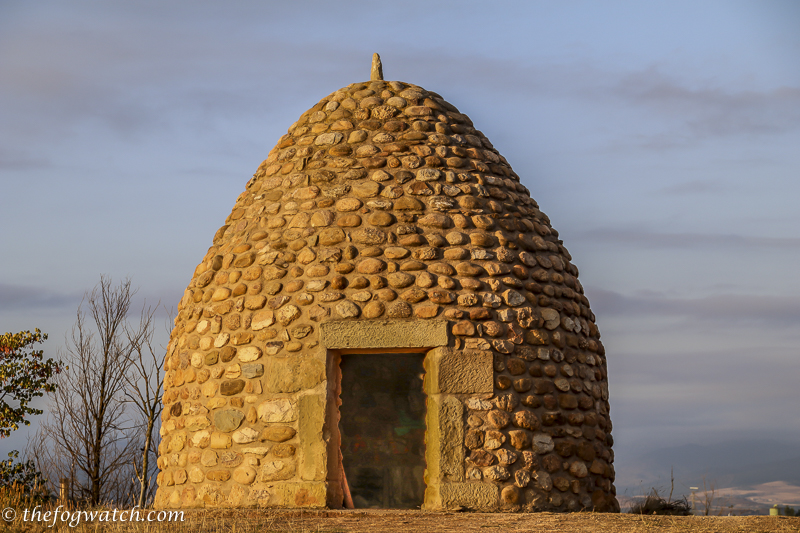
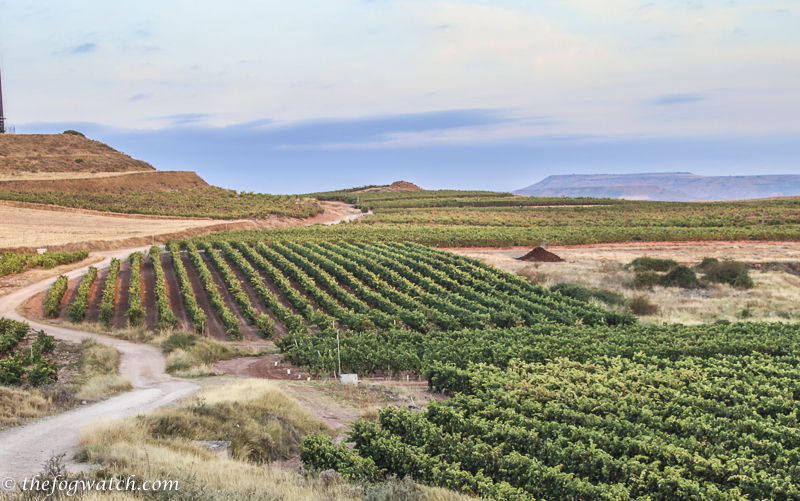

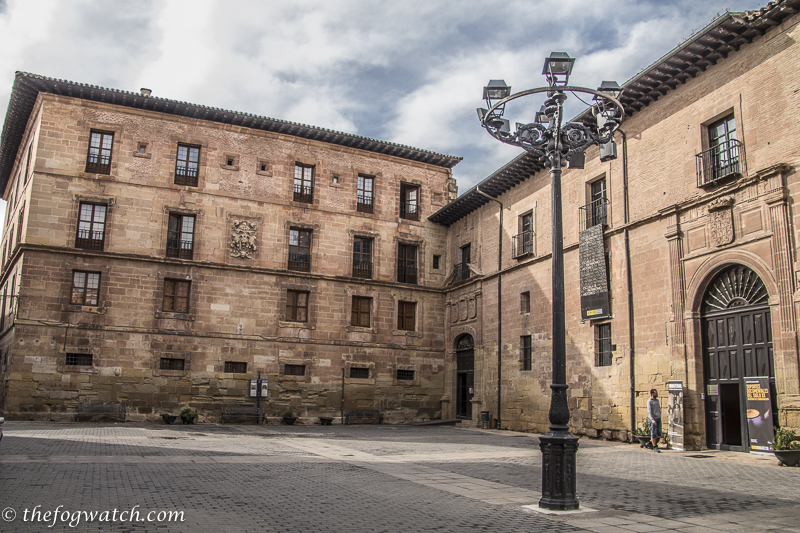


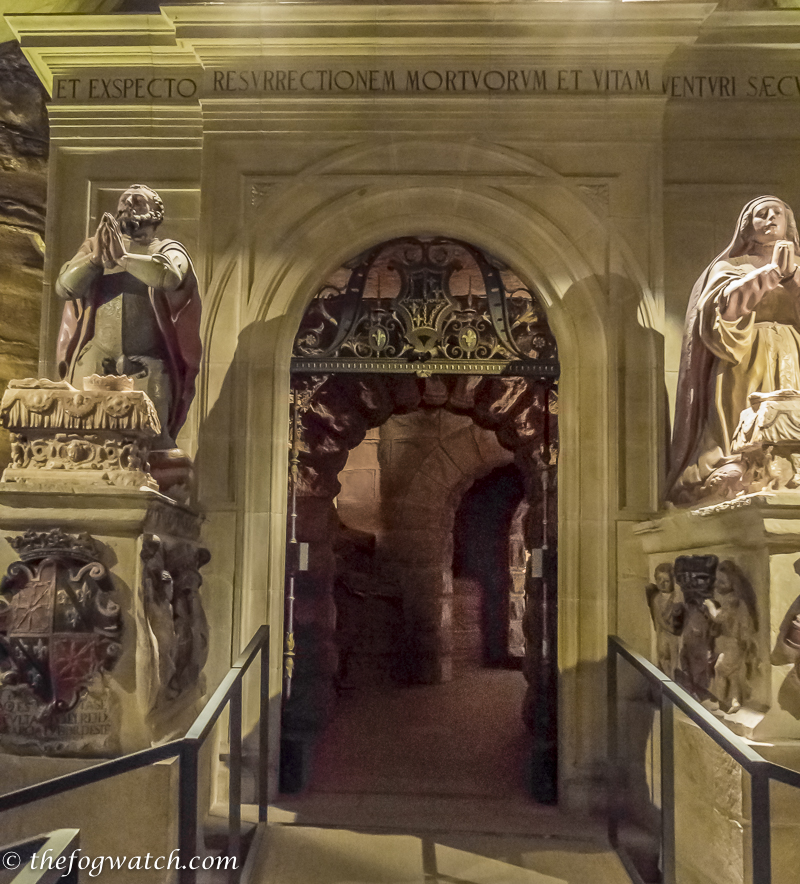
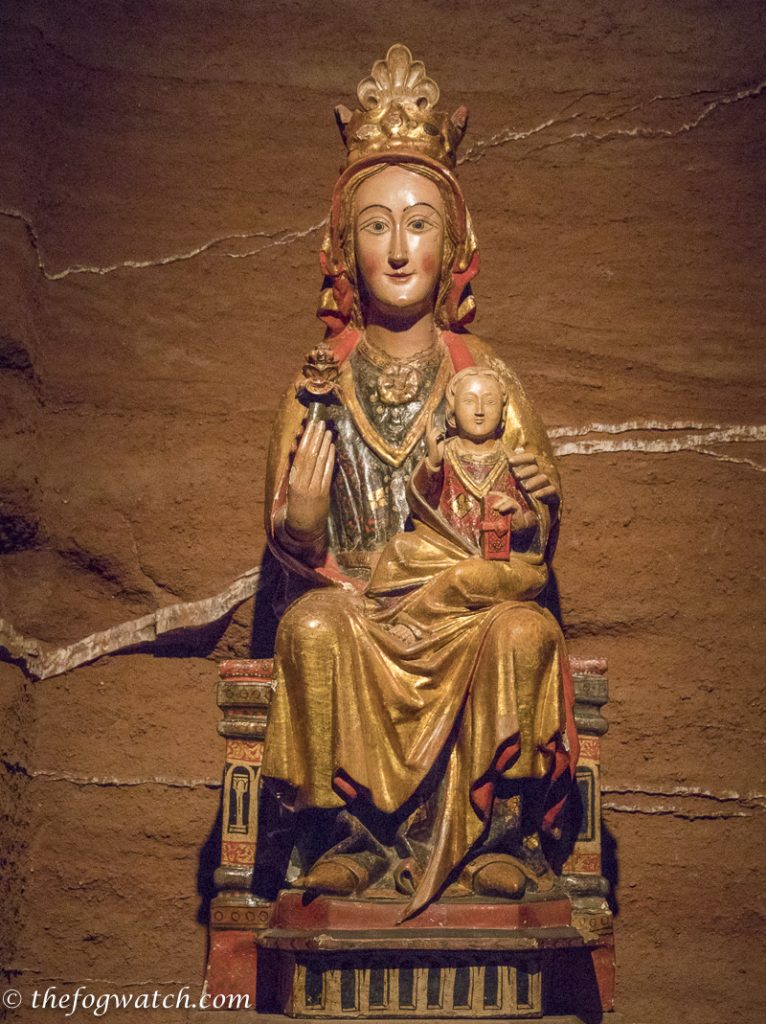
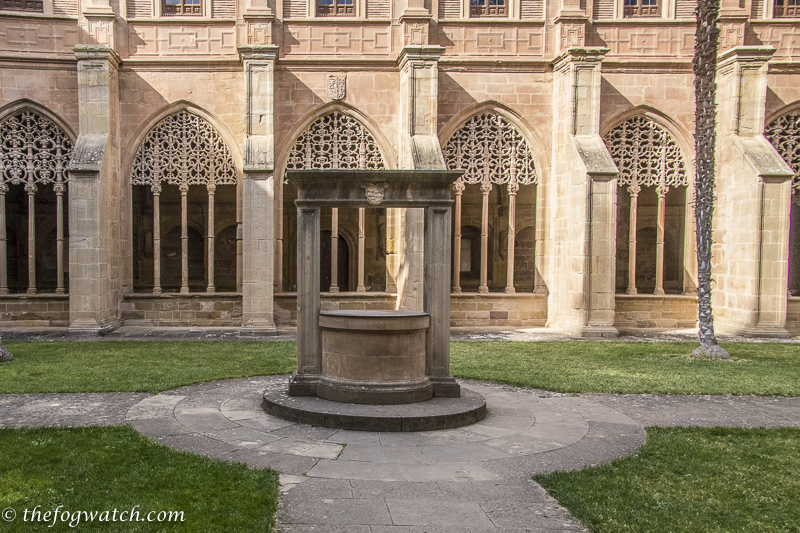
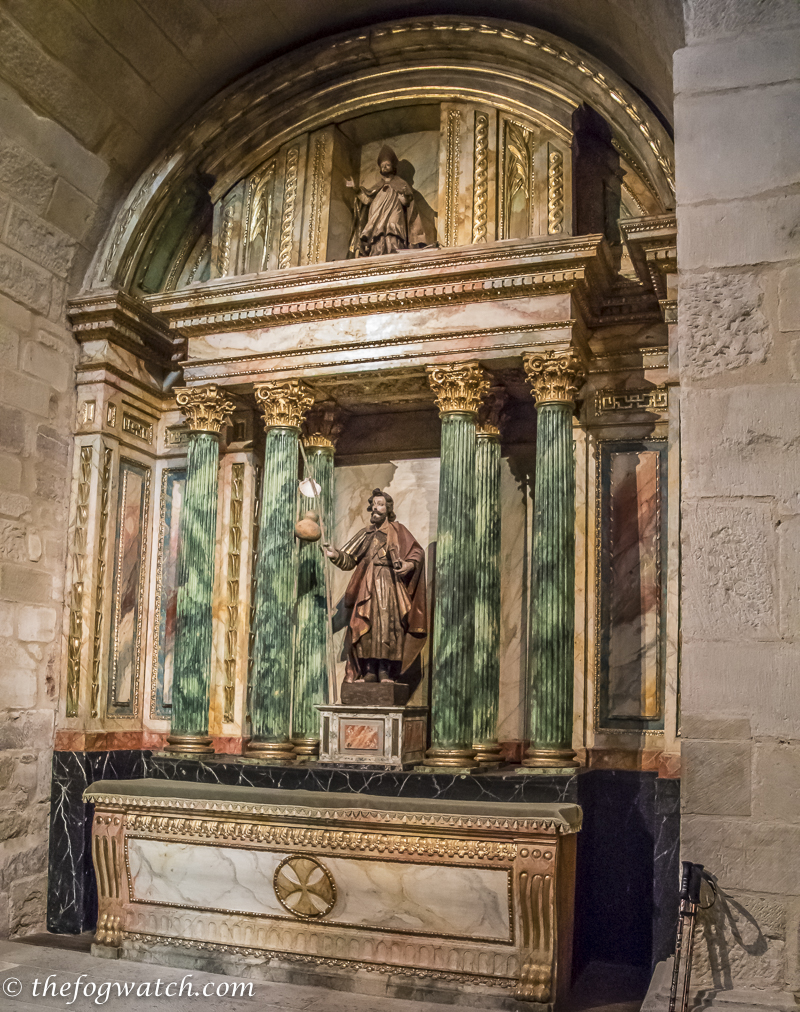
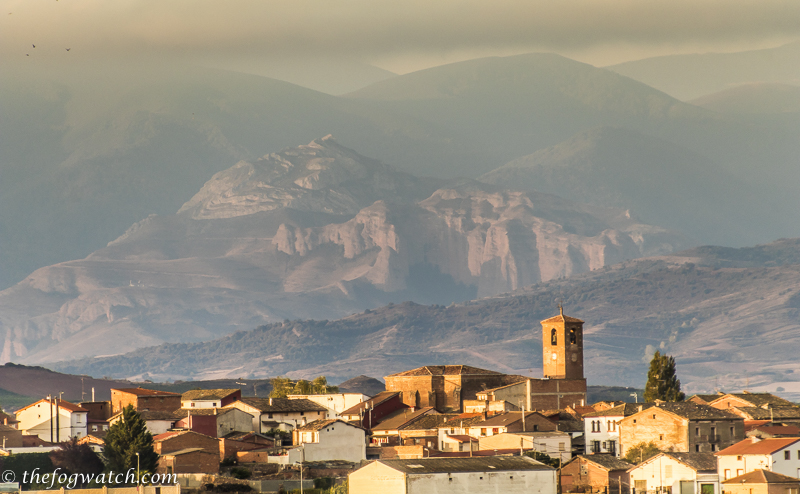

Hi Jerry, I remember you talking about your visit and seeing the Virgin Mary. She is beautiful. I’m also glad you had your good camera too, so we can also enjoy your photos. It was wonderful talking with you and Sharon at dinner and also kilt guy.
Thanks Kathy – yes we were very fortunate to see this 🙂
Fantastic report – as always.
Thanks Anneliese 🙂